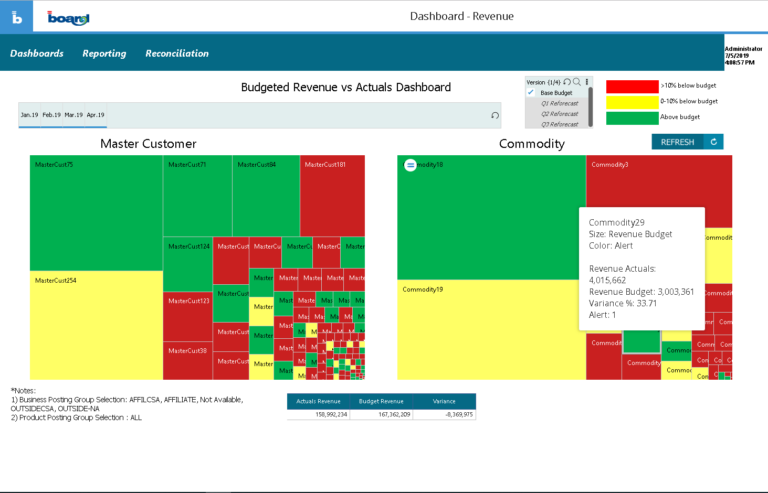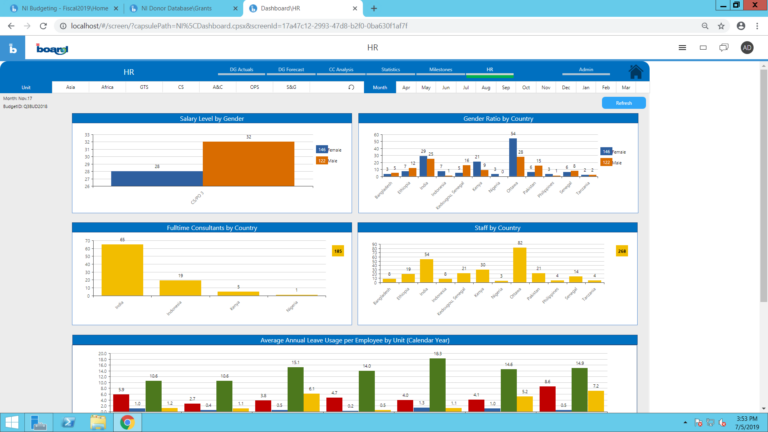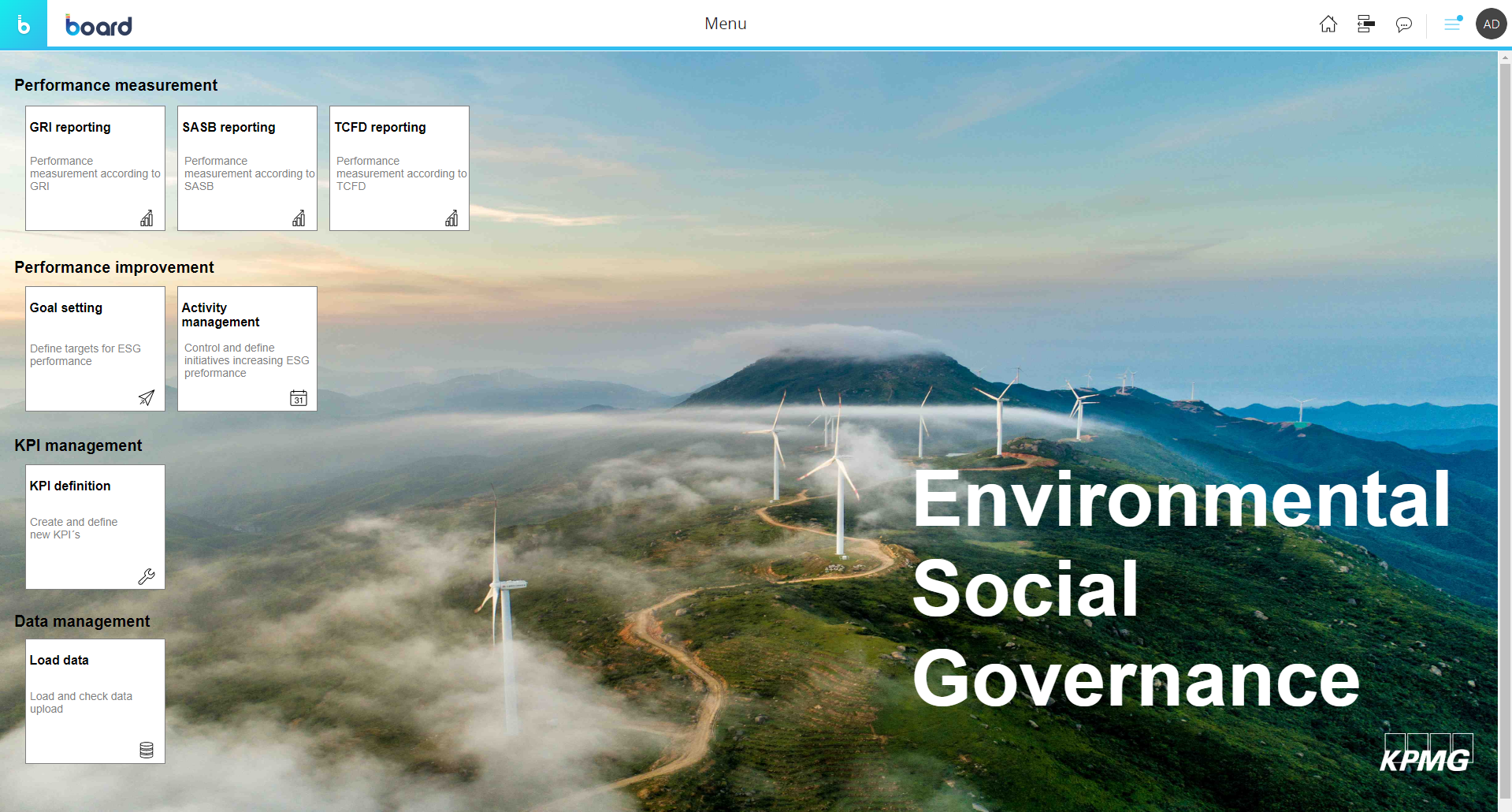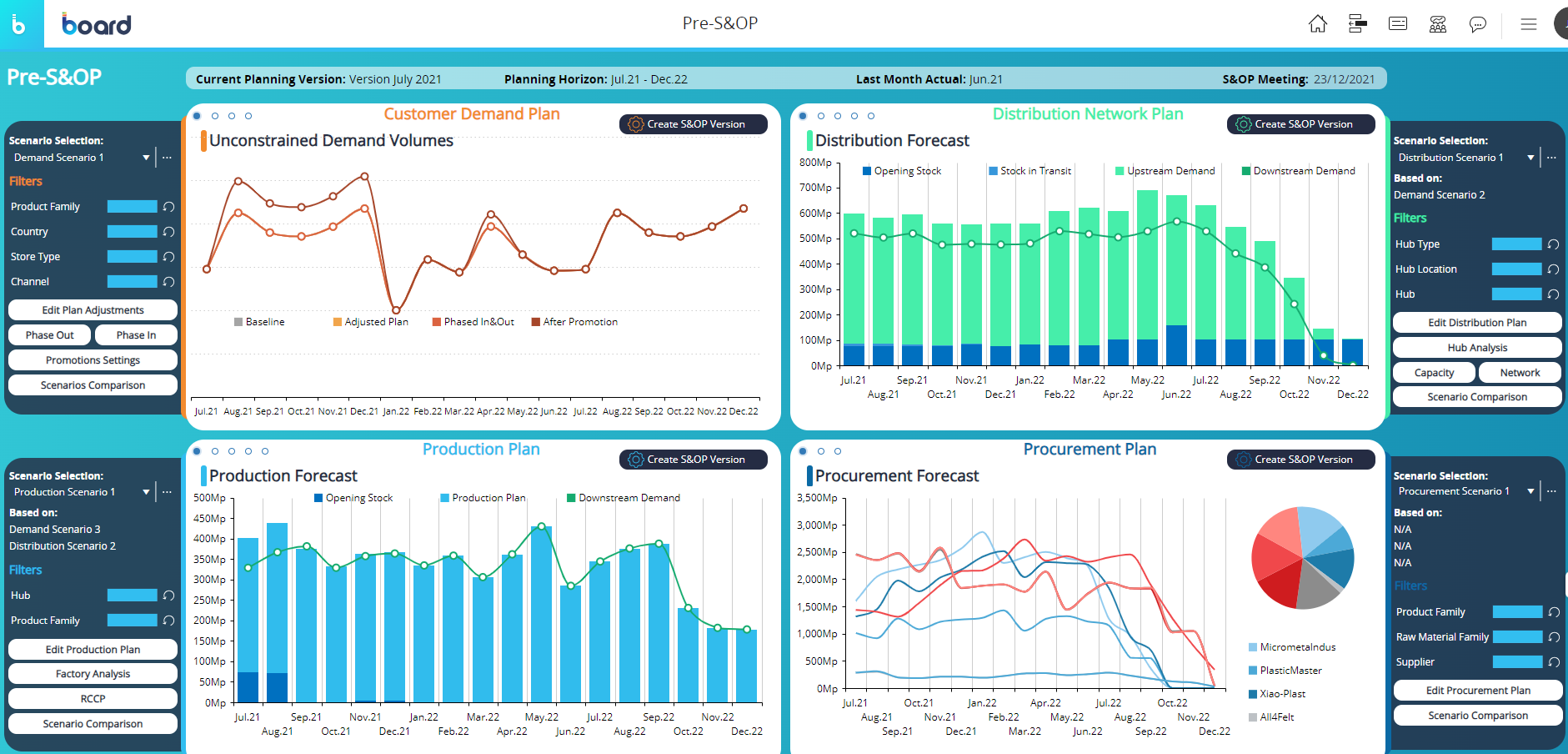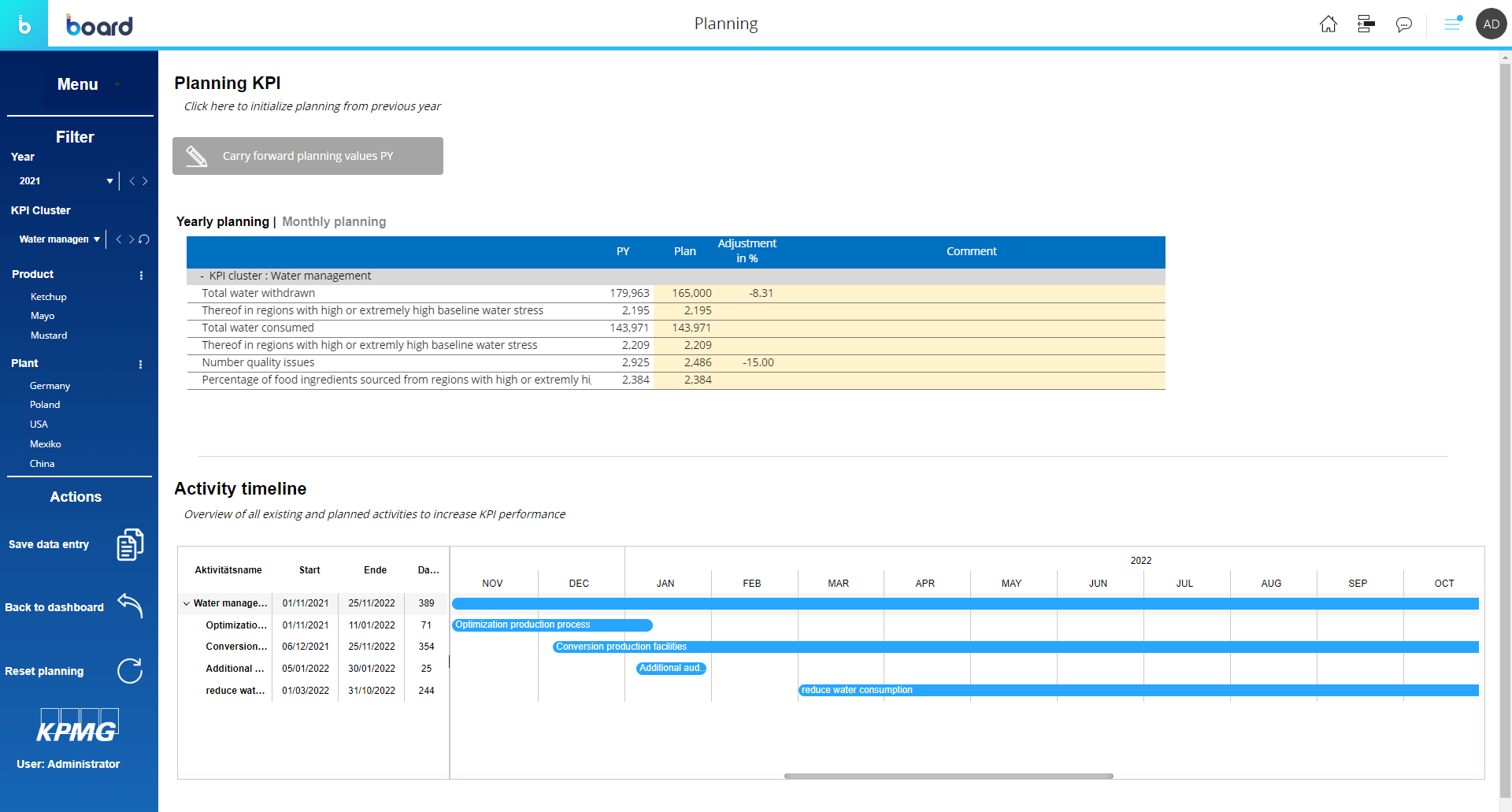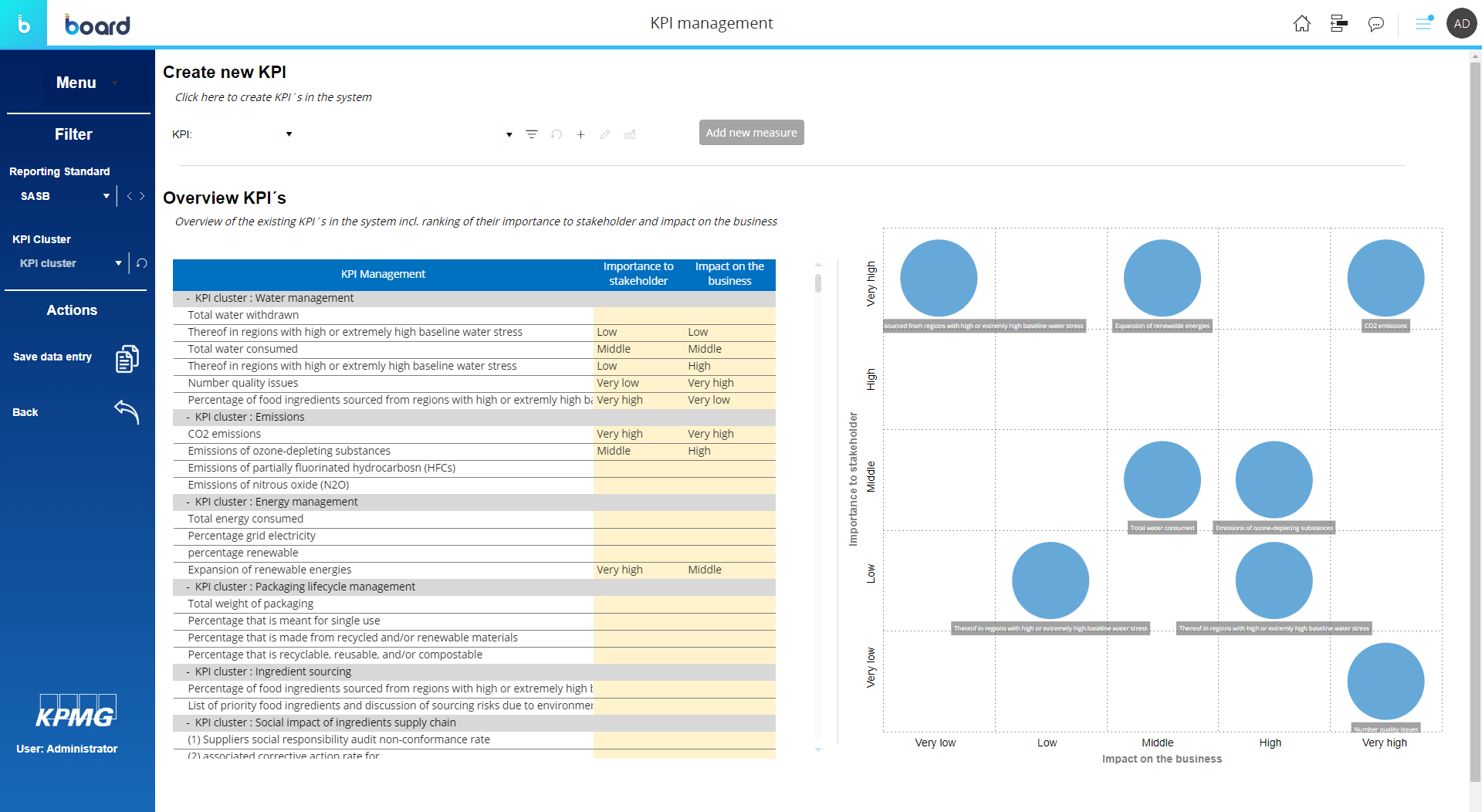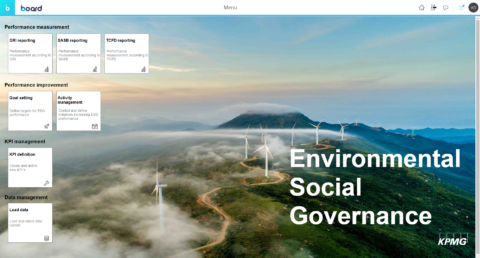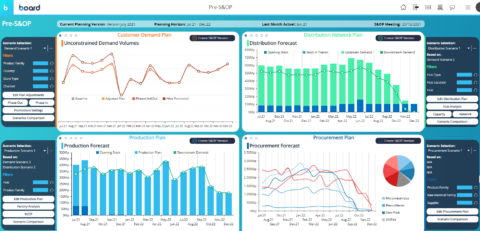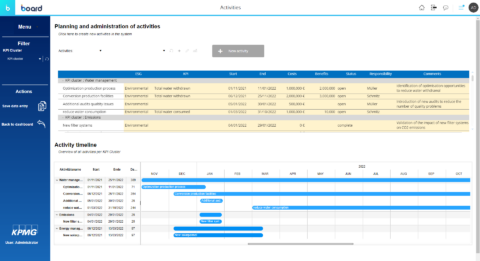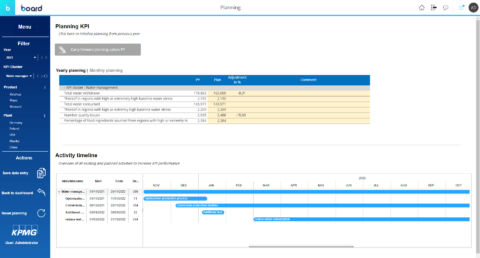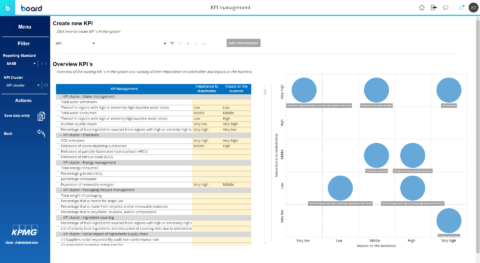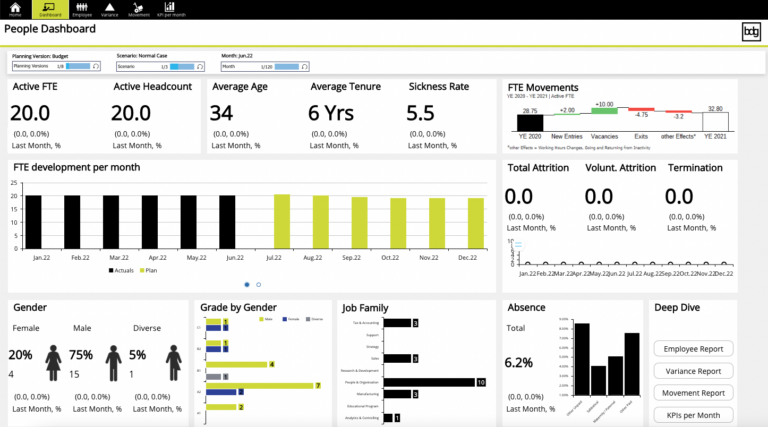
Environmental, Social, Governance Reporting & Steering
Our ESG reporting and steering application is divided into four different areas, each of which can be accessed via the menu (Fig. 1). In the “Performance Measurement” area, a pre-selection of ESG fields/KPIs for reporting can be made depending on the corresponding sustainability policy. Then, in various reports and dashboards with drill down functionalities, the current ESG performance of the company can be measured via the various KPIs of the guidelines. For example, a manufacturing company could analyse water consumption (Fig. 2) per country or product or other editable dimensions.
Through the various reports and dashboards, the application supports the company in identifying the need for action and provides the possibility to plan and monitor appropriate measures to improve performance over time. In addition to the definition of activities including responsibilities and costs, ESG targets can also be set per KPI in the “Performance improvement” area (Fig. 3). Here, planning can be done on an aggregated level (e.g. year) but also in detail (e.g. product and month), taking into account the defined activities (Fig. 4).
In addition to the KPIs contained in the guidelines, further KPIs can also be created in the application. Furthermore, the newly created KPIs and the KPIs of the individual guidelines can be classified according to their importance. In this way, the application helps to determine the relevance of the KPIs for the company. (Fig. 5). In the corresponding chart, the KPIs are then summarised according to their impact on the business and their importance for the stakeholders. Depending on the addressee of the reporting, the most important KPIs can thus be quickly identified. The final menu item, “Data management”, enables the simple uploading and checking of data of various types from all common source systems.
Want to see this solution in action?
Complete the form and our specialists will be in touch.
Other solutions

